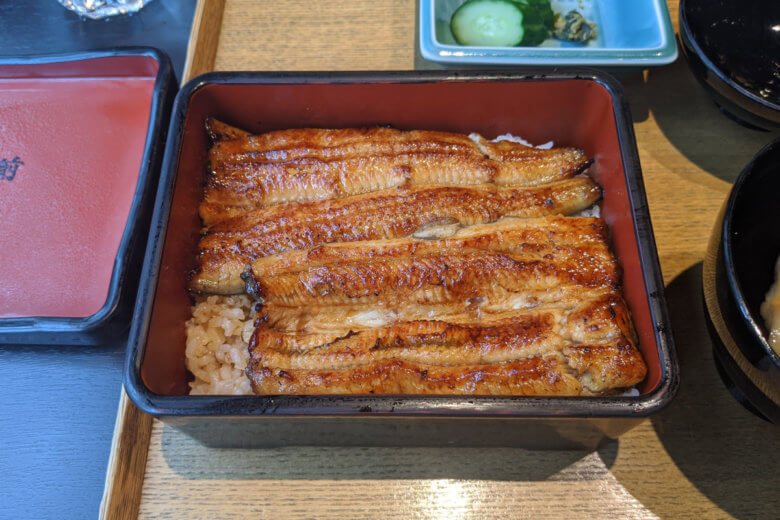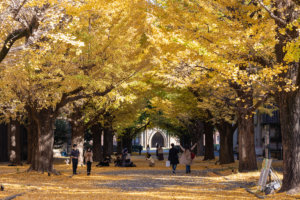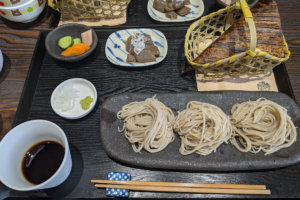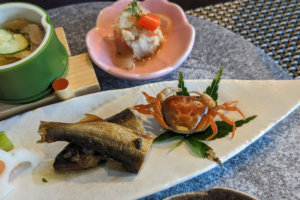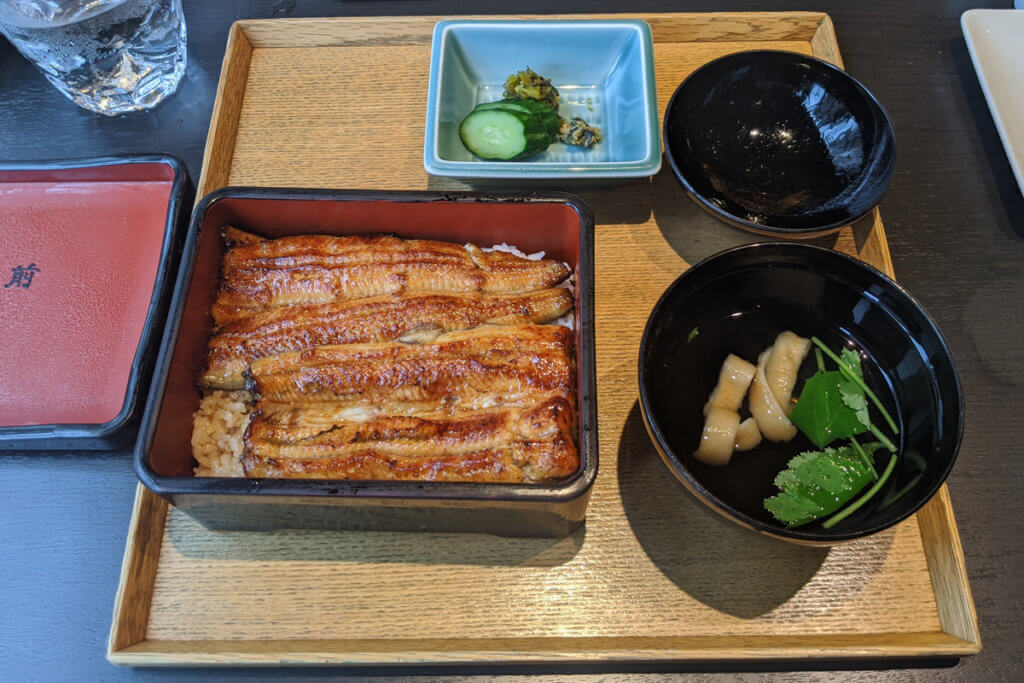
Summer is here.
I couldn’t pen down my thought of one summer dish: unagi. Unagi is a freshwater eel that is usually cooked in glazed-grill style. It’s a common food staple in Japanese cooking. Unagi is often eaten during a hot summer day especially by end of July or day of the ox, ‘doyo no ushi no hi’. Eating unagi ‘doyo no ushi no hi’ has been part of Japanese culture for ages. The local believe that unagi is a nutritious food that is good for stamina and health. It is also believed that unagi can help our body to cope with the summer heat. Another reason for eating unagi on the day of the ox is still unclear until now.
Starting early of July, many supermarkets start selling unagi to cater to people’s demand.
Unlike sushi, unagi is not a daily or even monthly food because of the price. It’s an expensive dish, especially if it’s eaten at an unagi specialist restaurant. For that reason, eating unagi in restaurant is only done at a special occasion, if not once in a while.
We could not wait for ‘doyo no ushi no hi’, we decided to spoil ourselves with an exquisite unagi dish in Marunouchi. After all, we rarely dine out during this pandemic time.
Like usual, we love to choose an unagi specialist restaurant. This time we booked a table at Maekawo. We found this restaurant in 2014 and became a loyal customer after the first time. It doesn’t take many chances to fall in love. The first chance is well enough to decide if you like something or not. That describes our story with Maekawa. The taste of the food is always superb at all times. Its popularity is justified.
Our reservation was at 11 am, an hour before lunchtime when salarymen around. Maekawo is not a family restaurant although it does not stop a family with children to dine in. There’s an unwritten rule in Japan that a family with children should not dine where the salarymen dine at. In other words “children are noisy, they should not bother salarymen”.
The restaurant was still quiet when we arrived at 11 am. We ordered a set menu that had more than five dishes.
The first dish on the menu was three tiny bite-sized pieces: soft tofu, smoked duck and unagi meatball.
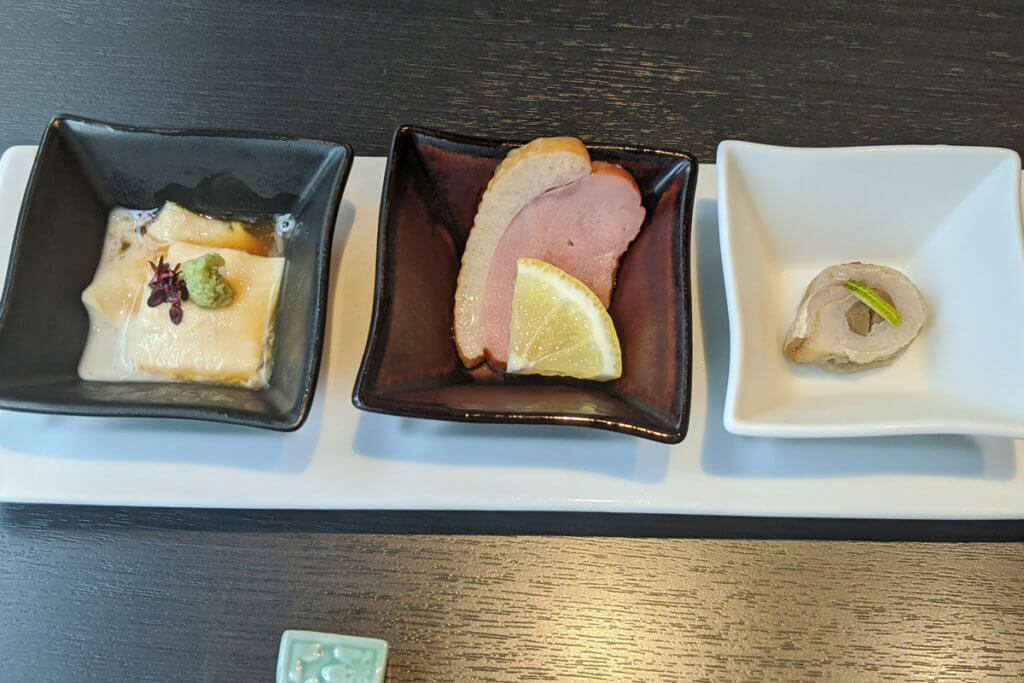
The second dish was sashimi : tuna, scallops and squid that were nicely cut into small bite pieces and garnished beautifully. Everything on this plate was raw.
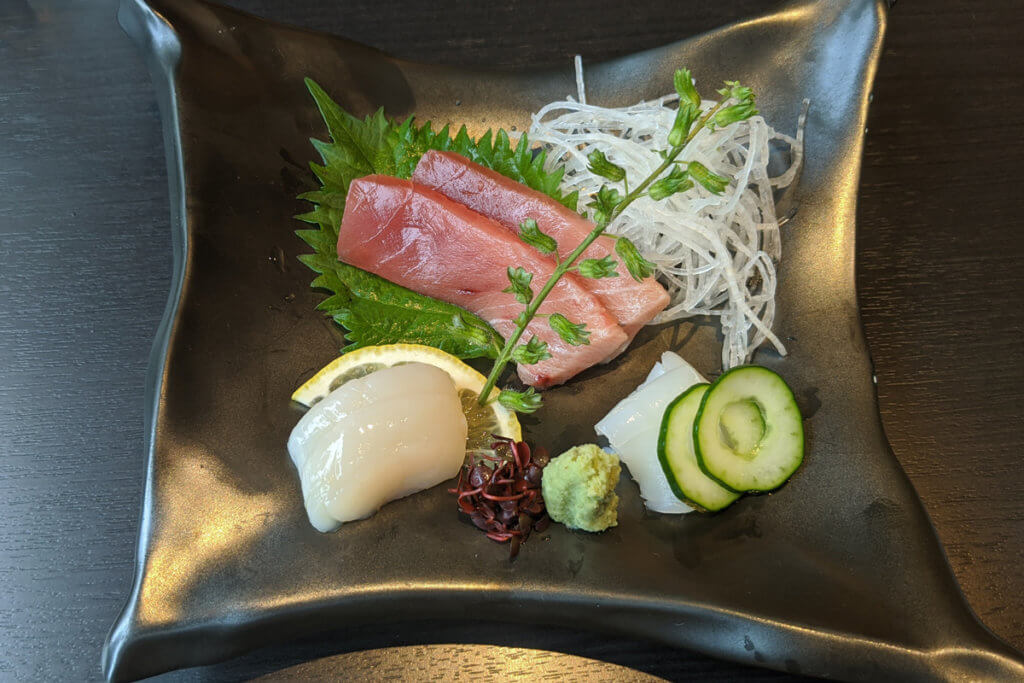
The third dish, grilled unagi without any glaze. This was the first time I tasted unagi without any sauce. Surprisingly, a simple unagi like this could be tasty that I was craving for more.
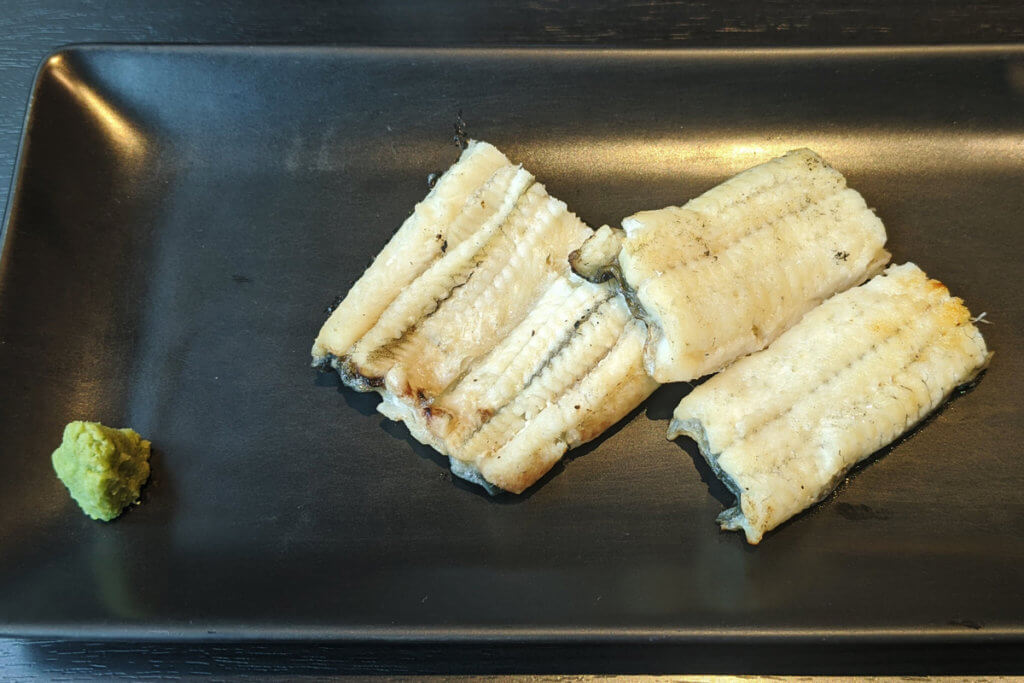
The fourth dish on the menu was chawan mushi, an egg custard. Chawan mushi is a popular dish available in almost every Japanese restaurants in the world. Chawan mushi usually has a different type of filling: ginkgo, oyster, mushroom, fish cake, etc., but rarely eel. This chawan mushi, however, had a tiny cut of unagi at the bottom of the cup. The unagi cut was so tiny that I could not help to getting the main dish.
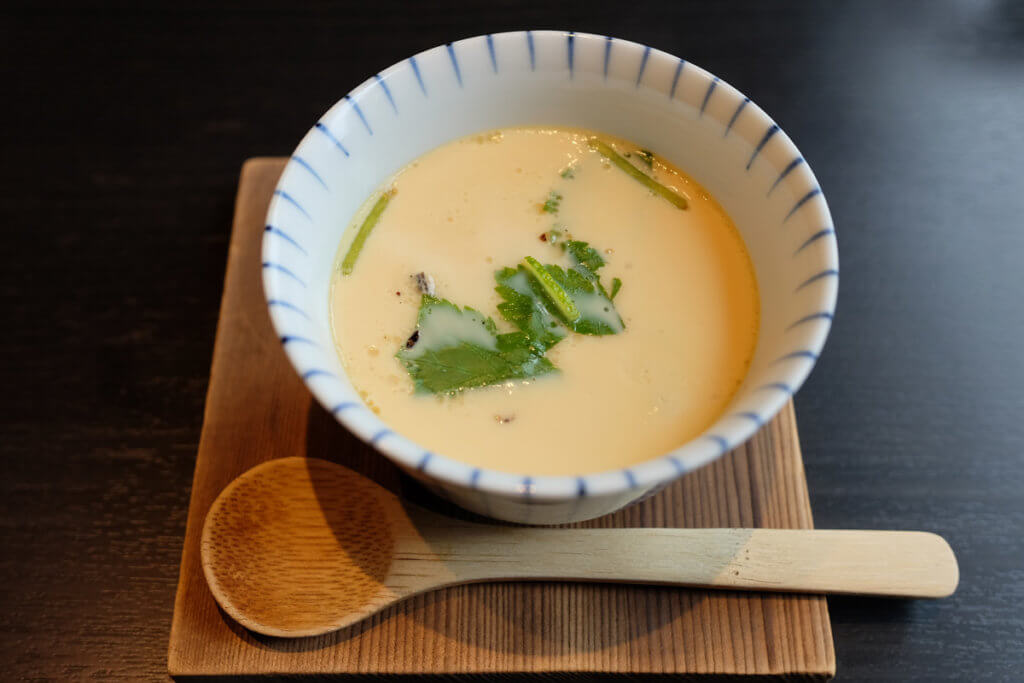
…. but the wait has yet over. We still at the fifth dish. It was unagi in cold clear soup. Let’s call this dish a prologue to a grandeur food journey. Its tiny cuts of glaze-grilled unagi that made me screamed: “where’s the rest of the unagi”. I was too consumed by the desire to get to the main dish, forgot to enjoy the beautiful dish I had on the table. I didn’t realise how smart the chef was, laying glazed-grilled unagi in clear soup (or broth). The glaze could change the soup colour but it didn’t. The clear soup wasn’t an ordinary broth soup (dashi). It almost like yuzu/citrus juice. Pair it with glazed grilled eel, a great combination it was. I never thought yuzu could work well with glazed grilled eel.
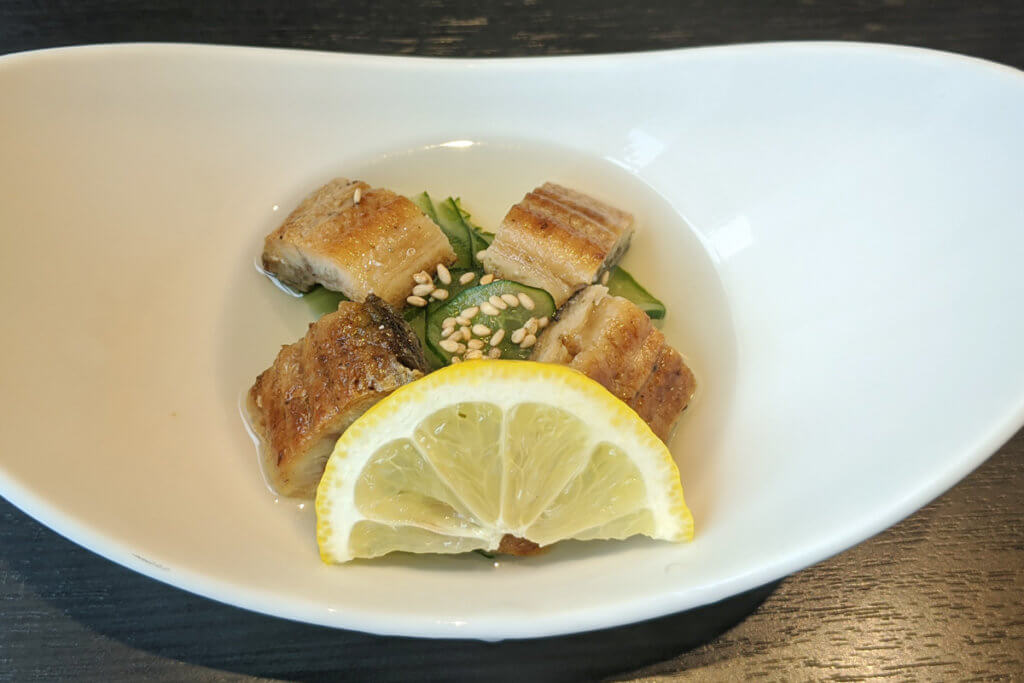
Finally, the champion arrived on our table: the glazed grill eel, unagi. Everything on this tray was in closed boxes, except the pickle. No surprise in there, it’s just pickles.
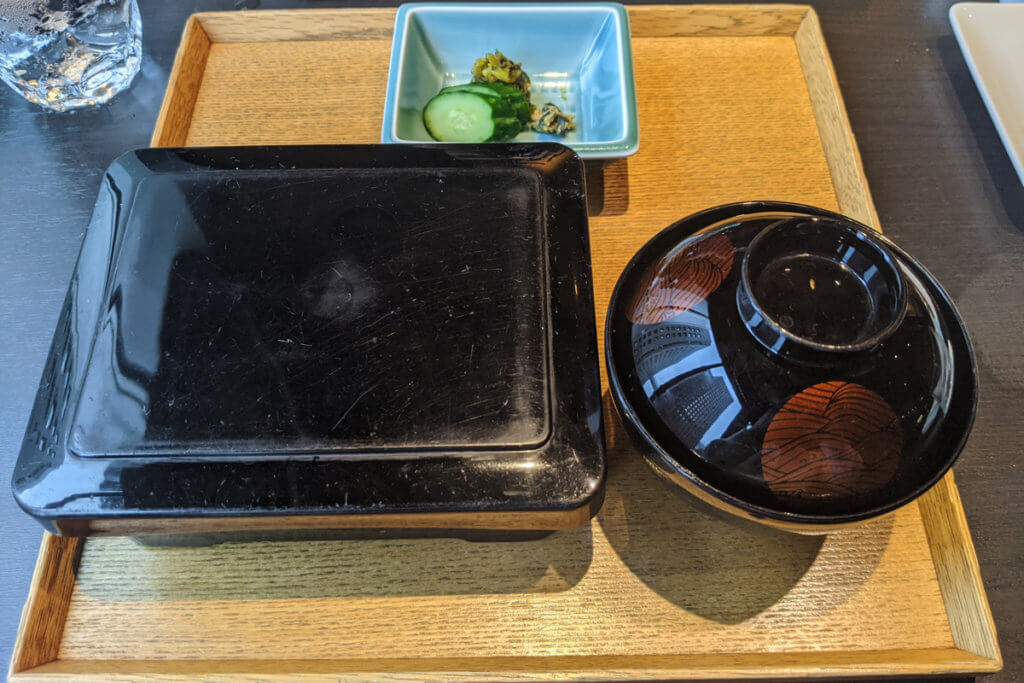
There it was, glazed grilled fresh water eel, sitting on a bed of steamed white rice. The aroma was calling me so hard that I nearly forgot to snap a picture.

Here’s a closer look of unagi.
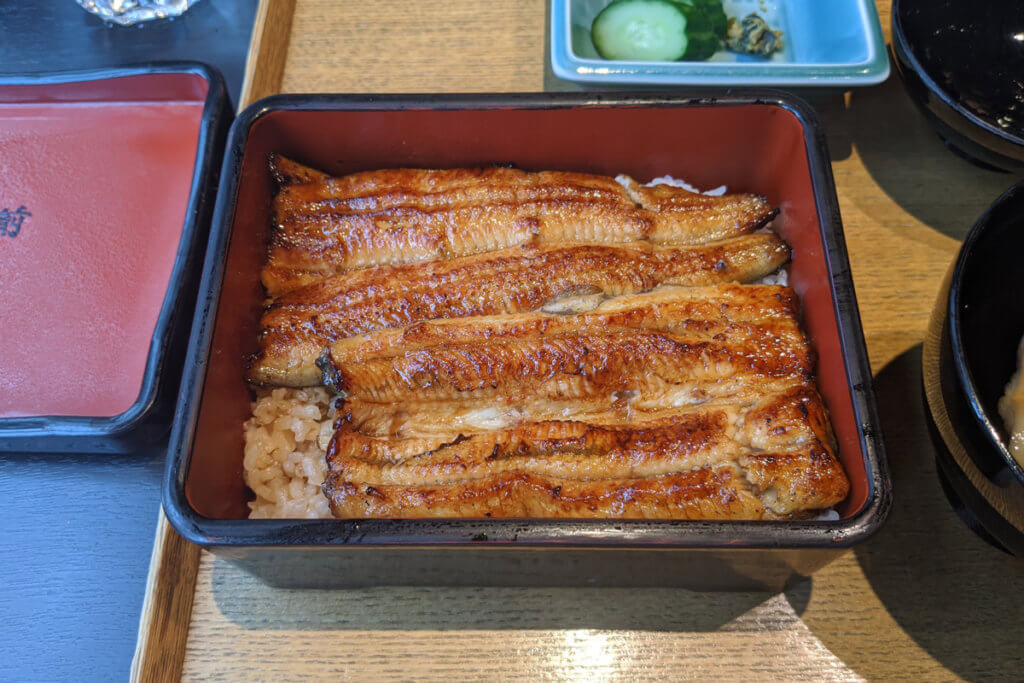
This unagi can be eaten as it is or top with ‘sansho’ or special spices with a unique smell. Sansho has a distinct taste that a little bit of it can be overpowering. I always love eating unagi with ‘sansho’. It elevates unagi taste.
By the time I reached the dessert, I paused and told myself that I must finish this slice of melon.
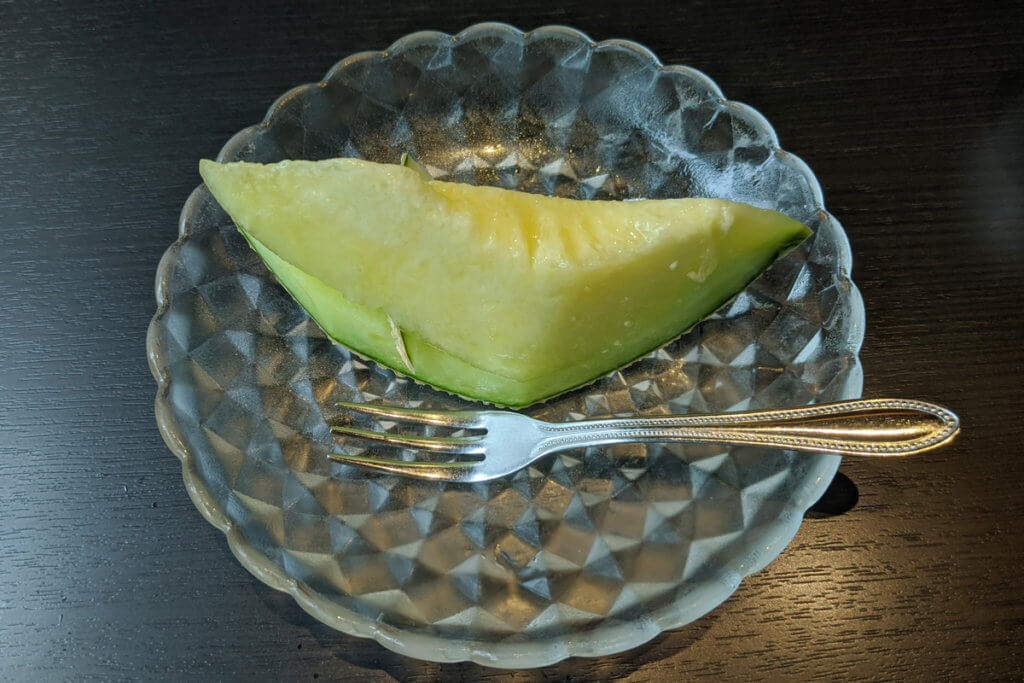
It was 1230 when we finished dining. The restaurant was nearly full house. It was a good time to leave the restaurant. We enjoyed the set course to the last dish. It cost 24,500 yen ( approximately $228.50) for two persons.
Will we ever come back to Maekawa? Absolutely yes, we will. It’s one of the restaurants in Tokyo that we always want to go back to. Dining like this once in a while, why not? While we can still go out amidst the pandemic.

